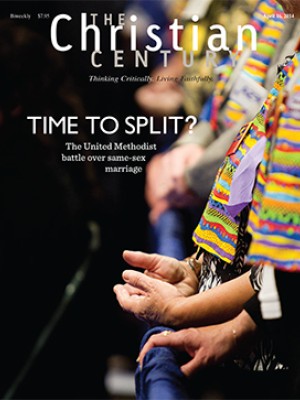D.C.’s ‘ugliest church’ meets wrecking ball
So long, ugly church. Very few people will miss you.
After years of protracted legal battles, a small band of Christian Scientists within a stone’s throw of the White House have something to cheer about: the church they called home for nearly 40 years, often mistaken for a bunker, will soon be no more.
Members of the Third Church of Christ, Scientist, have tried for years to tear down their windowless building, built in 1971 at the height of “brutalist” architecture. In Washington, as in most cities, there’s not much appetite for brutalism anymore.
Read our latest issue or browse back issues.
Except, that is, among some preservationists who in 1991 applied for historic landmark status for the building without the church’s knowledge.
Church members said the brown concrete walls, lack of windows, and a front door that wasn’t visible from the street all worked against the congregation of 50 to 60 members. A treeless, windswept plaza didn’t help either. Inside the darkened sanctuary scaffolding had to be erected just to change the lightbulbs.
Moreover, the small congregation had visions of transforming the site two blocks from the White House into an office building with a new space for the church—a financial windfall that could help sustain the church’s operations for years to come.
After the city granted landmark status in 2007, over the church’s objections, the church filed suit. Legal scholars and developers followed the case closely after it raised an important question: If the owners want to tear down a building, can somebody else force them to keep it?
For the church, it was a fundamental question of religious freedom because the church said the old building actually detracted from its mission, sapped precious resources, and contributed little to the community.
In 2010, a settlement was reached between the church, city government, preservationists, and development partners. The landmark status was revoked and a demolition permit was granted. The design concept was approved in 2012.
Mark Mathiesen, a member of the congregation and the project manager for the new church building’s construction, said the demolition and new construction mark an exciting time in the church’s history.
“In many respects, it was the opposite of the old church,” Mathiesen said of the new building’s design. “We talked with the architects about transparency, light, and openness to the community.”
The new building will boast top-to-bottom windows, with 130,000 square feet of offices and 10,000 square feet reserved for the church and a Christian Science Reading Room. Street-level retail and underground parking are also planned for the site.
“We’ve wanted to develop the site since 1985, and we’ve had a lot of twists and turns over the years,” Mathiesen said.
For now, the congregation is holding Sunday services across town on Capitol Hill, while its midweek testimonial meetings are held in a Christian Science Reading Room near the old site. The project is expected to be finished by 2016.
Members are pretty sure they’d have the blessing of the church’s original architect, Aral-do Cossutta. “My work should not be fossilized,” he once said, “but when you replace it, make sure the replacement is an even greater gift.” —RNS





